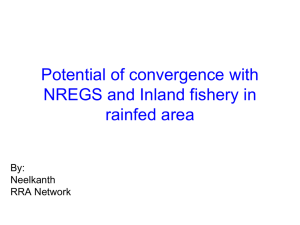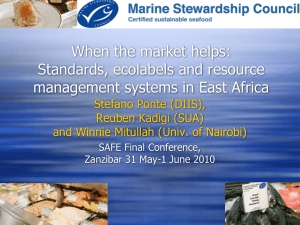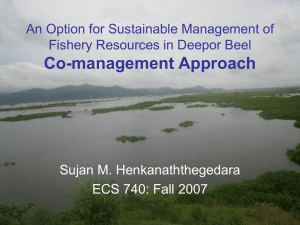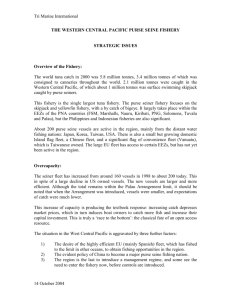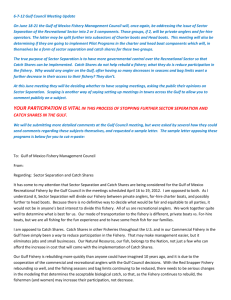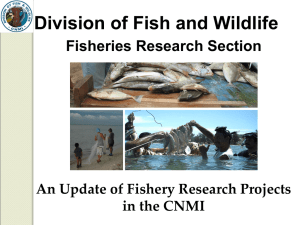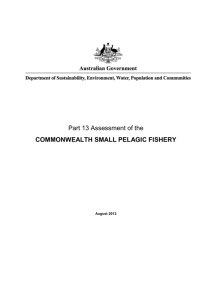By-product Fisheries Assessments Basic Information
advertisement
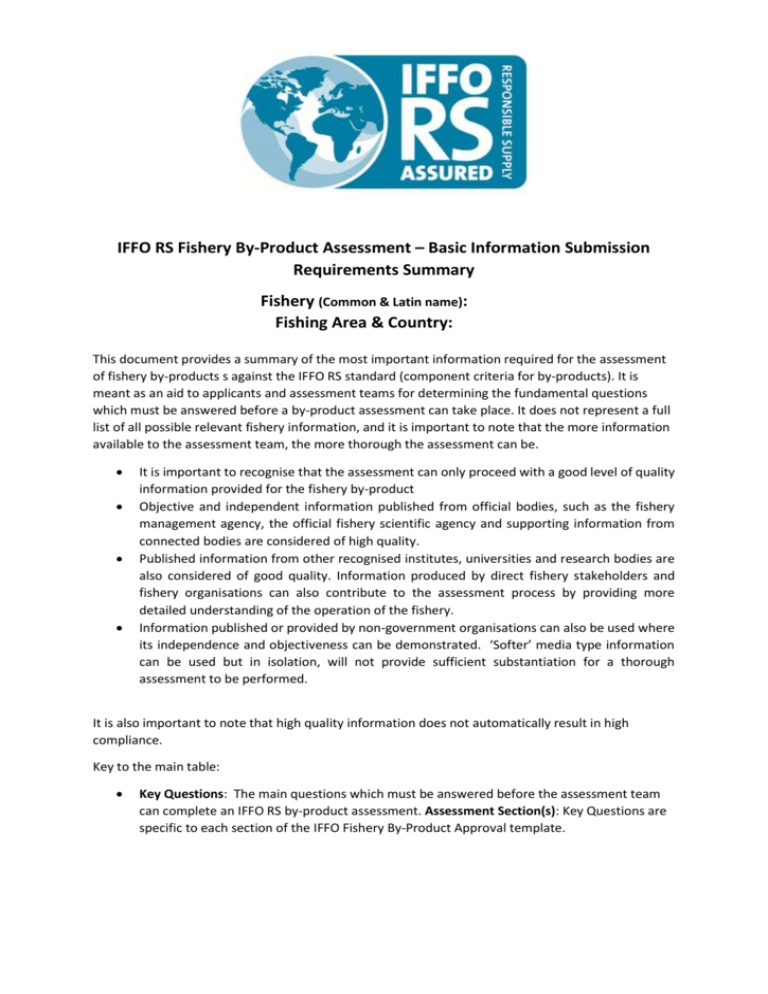
IFFO RS Fishery By-Product Assessment – Basic Information Submission Requirements Summary Fishery (Common & Latin name): Fishing Area & Country: This document provides a summary of the most important information required for the assessment of fishery by-products s against the IFFO RS standard (component criteria for by-products). It is meant as an aid to applicants and assessment teams for determining the fundamental questions which must be answered before a by-product assessment can take place. It does not represent a full list of all possible relevant fishery information, and it is important to note that the more information available to the assessment team, the more thorough the assessment can be. It is important to recognise that the assessment can only proceed with a good level of quality information provided for the fishery by-product Objective and independent information published from official bodies, such as the fishery management agency, the official fishery scientific agency and supporting information from connected bodies are considered of high quality. Published information from other recognised institutes, universities and research bodies are also considered of good quality. Information produced by direct fishery stakeholders and fishery organisations can also contribute to the assessment process by providing more detailed understanding of the operation of the fishery. Information published or provided by non-government organisations can also be used where its independence and objectiveness can be demonstrated. ‘Softer’ media type information can be used but in isolation, will not provide sufficient substantiation for a thorough assessment to be performed. It is also important to note that high quality information does not automatically result in high compliance. Key to the main table: Key Questions: The main questions which must be answered before the assessment team can complete an IFFO RS by-product assessment. Assessment Section(s): Key Questions are specific to each section of the IFFO Fishery By-Product Approval template. Very useful evidence to be submitted with this form: Fishery that the by-product species originated from (specific geographic location and stock definition, gear type or fishing method). IUCN status for the species and stock under evaluation, if relevant. Stock assessment outputs, including catch data, biomass estimates, TAC recommendations, diagrams and tables, etc. Main fisheries legislation Comparisons of total fishery removals against sustainable fishery removals, reference points, or any other indicator used to ensure the level of fishing is sustainable. Stock-specific or other fishery management plan. Please attach to this form all relevant and useful information as mentioned above linking to all their respective references and clauses, and send directly to the Certification Body. SAI Global e-mail for submission of information: fisheriesinfo@saiglobal.com Your Key Contact Information Name: Tel. No: Cel. No: Email: Country: Notes: Resources: Applicants should also refer to the Guidance Document for By-Product Fish Fishery Assessments. Link here. Note on translation of information: The IFFO Fishery By-Product Assessment reports will be written in the English language. IFFO recognised that by-product fishery information may not be available in English translated formats. It is not necessary for Applicants to translate information to English for submission to the Certification Body but IFFO would like to ask that wherever possible, electronic documents are in unlocked software formats so that the certification body can undertake on-line translations more readily. Note: throughout this table, ‘the by-product fishery’ is shorthand for ‘the by -product fishery under assessment’. Key Questions Assessment Source of Section(s) Information Which specific stock(s) is the by-product sourced from? A Describe the traceability of the by-product back to the fishery. A Include the geographic location of the stock, the management jurisdiction and the nationality of the vessels from which fish is sourced. A Describe the fishing method(s) used. Has the fishery been subject to systemic IUU (in the last 5 years) and fishing practices that are highly destructive to the habitat or ecosystem? A What is the authority responsible for the management of the fishery? What are the major legal instruments and regulations under which this authority and fishery operates? A Provide the fishery specific management measures that are in place. A Describe how enforcement/compliance is achieved? A Is a sustainable level of fishing determined? A Report attached Is there an appointed research agency for the stock? B Describe this and provide information on what research is available? E.g. Are stock assessments conducted? Provide the most recent reports. B Is the fishery descried as data deficient by science or management agencies? Provide evidence. B Does the species have an IUCN designation or listed by CITES (http://www.cites.org/)? If so, provide the details (refer to www.iucnredlist.org and if there is information of how specific the rating is with reference to this stock/geographic location. C Is the fishery certified to an existing Scheme e,g, Marine Stewardship Council. Provide details that trace the certification to the fishery such as a link to the MSC report that identifies the species and stock.

